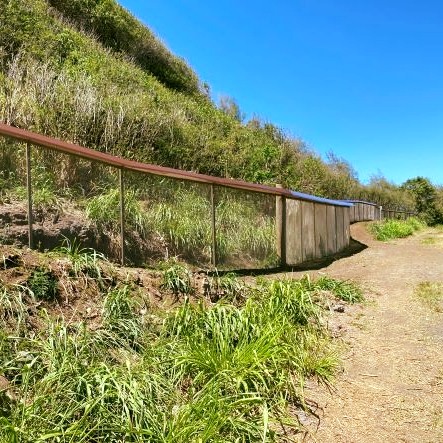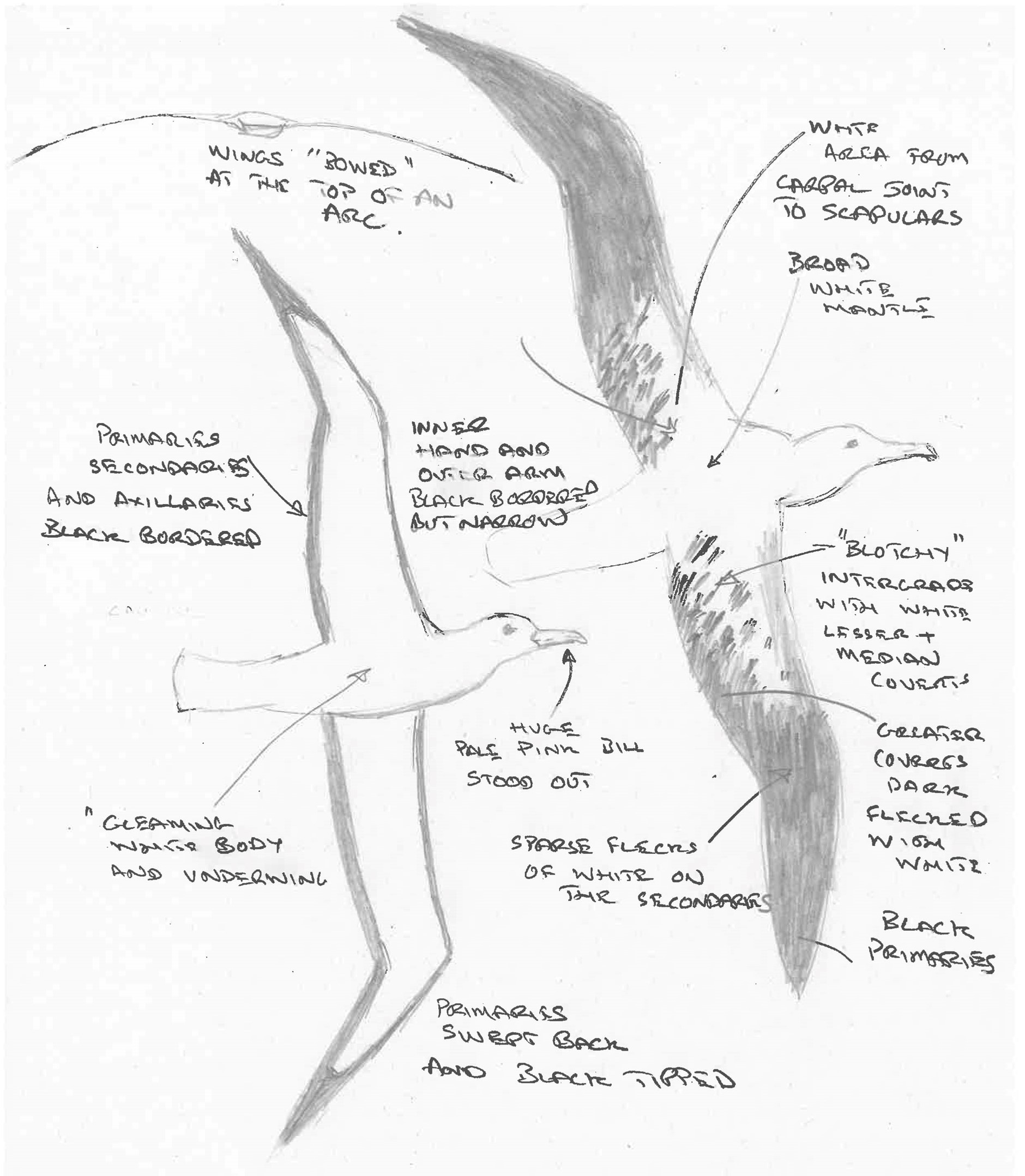
Sketches of the great albatross seen off Ireland, drawing by John Lynch
Those species of albatrosses whose homes fall within the southern hemisphere are rarely recorded outside of it; the less windy and prey-poor tropical seas being considered-too much of a barrier to their crossing the equator and venturing farther north. Nevertheless, isolated individuals of several species do get seen at sea from time to time, or even on or over land, in the northern hemisphere (click here for an ACAP Latest News 2010 compilation). In the North Atlantic it is the Black-browed Albatross Thalassarche melanophris that is most commonly observed, with sometimes multiple sightings of what is most likely the same individual; a recent record being of an adult seen off Iceland. There are also a few records of Atlantic Yellow-nosed Albatrosses T. chlororhynchos north of the equator in the Atlantic.
Less common are North Atlantic sightings of a great albatross of the genus Diomedea, making the recent report of one seen (and sketched) off the coast of Ireland noteworthy. The following account by John Lynch is from the online news service BirdGuides.
“The remnants of Hurricane Ernesto were due to hit south-west Ireland on the evening of Wednesday 21 August. After finishing work, I drove with some anticipation to Seven Heads, a promontory to the east of Leganagh Point in Co Cork that myself and some local birders have been pioneering as access to other headlands in the area has become difficult.
When I was 2 km from the site, a message in the Cork Rare Birds WhatsApp Group announced that Dennis O'Sullivan had an albatross species at 5.23 pm heading west from Ballycotton, which is 57 km to the east. Within 15 minutes I had met local birder Ronan O'Driscoll at the watchpoint. We discussed Dennis's find and the possibility that the bird could potentially pass Seven Heads, so we commenced scanning east towards the Old Head of Kinsale.
The wind was blowing from the south-west at a F6 and light conditions were good, with the Old Head lighthouse visible some 12.5 km to the east. There was a light breaking swell over which there was a steady westerly moving passage of Manx Shearwaters interspersed with Cory's Shearwaters and some Northern Fulmars.
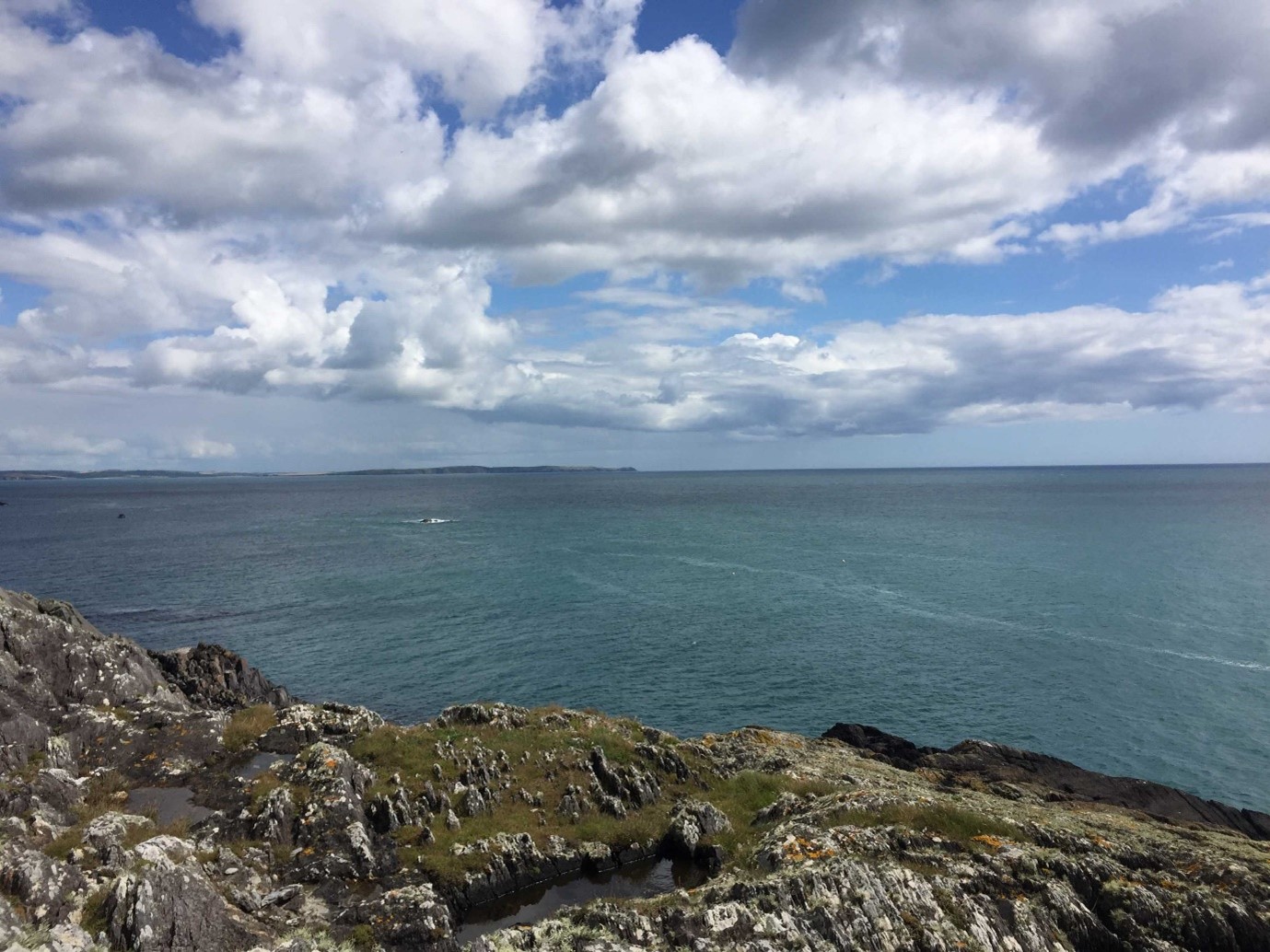 Seven Heads seawatch point, with Cotton Rock foreground and the Old Head of Kinsale some 12.5 km to the east, photograph by John Lynch
Seven Heads seawatch point, with Cotton Rock foreground and the Old Head of Kinsale some 12.5 km to the east, photograph by John Lynch
The minutes passed and at 5.55 pm I was checking through a feeding flock of manxies [Manx Shearwaters] approximately 500 m offshore when a bird rose and banked vertically in front and above the flock presenting its full underside.
I thought: 'What the … this bird is huge!' My first impression was of long, extended gleaming-white underwing, with black-bordered secondaries, primaries and to a lesser extent the inner wing arm and outer wing hand. The hand of the outer wing was swept back and tipped black.
I shouted 'albatross' to Ronan, followed by 'it's got a pink bill'. The bill was huge and really stood out. As the light caught the bird I noted how clean the underside and head were. 'I have to get a photo,' I thought, and I reached for the camera hoping the bird would pass in front of us. I couldn't pick the bird up, though.
'OK, focus on getting details,' I thought, as I dropped the camera and reverted back to the 'scope, quickly connecting with the bird as it completed a towering arc and presented its back. I could clearly make out that the head, mantle, rump and tail were white and the white of the mantle extended onto the lesser and median coverts. The rest of the wing, including the greater coverts, primaries and secondaries was black and flecked with white, which was primarily confined to the coverts. The intergrading of the white on the coverts with the dark Diomedea areas looked blotchy, spotted and rough.
What was now clearly an albatross species was completing slow towering arcs and as I shouted directions to Ronan he connected as it broke the horizon. On reaching the top of an arc I could see the wings were slightly arched and, coupled with the size of the bird, the thought that 'this bird looks like a hang glider' ran through my head!
Both Ronan and I watched as the bird completed six or seven towering arcs from the sea surface to above the horizon, slowly making its way in a southerly direction out to sea, until it was finally lost to view. The total observation time was about seven to nine minutes and both of us concurred that in all this time we hadn't see the bird flap once!
I sent out a message that read 'albatross sp past Seven Heads 5.55 pm' and called Dennis. Given the distance and time this was not Dennis's bird, which had a dark underwing and he identified D. dabbenena as an immature Black-browed Albatross.
It was clear Ronan and myself needed to take notes and read reference guides as I suspected this was one of the 'great albatrosses' of the genus. We discussed our notes on Thursday morning and concluded that this was an adult male from the wandering albatross species complex.”
Without photographs (as in this example), or the reading of a individually numbered leg band or morphometric measurements (which requires the bird in the hand), it is not feasible to identify the Irish great albatross to species, but it seems most likely to be either a Tristan D. dabbenena from Gough Island, or a Wandering D. exulans from South Georgia (Islas Georgias del Sur)1, farther south.
1A dispute exists between the Governments of Argentina and the United Kingdom of Great Britain and Northern Ireland concerning sovereignty of the Falkland Islands (Islas Malvinas), South Georgia and the South Sandwich Islands (Islas Georgias del Sur e Islas Sandwich del Sur) and the surrounding maritime areas.
References:
Cuthbert, R.J., Phillips, R.A. & Ryan, P.G. 2003. Separating the Tristan Albatross and the Wandering Albatross using morphometric measurements. Waterbirds 26: 338-344.
Ryan, P.[G.] 2000. Separating albatrosses. Tristan or Wandering? Africa – Birds & Birding August/September 5(4): 35-39.
John Cooper, Emeritus Information Officer, Agreement on the Conservation of Albatrosses and Petrels, 03 September 2024

 English
English  Français
Français  Español
Español 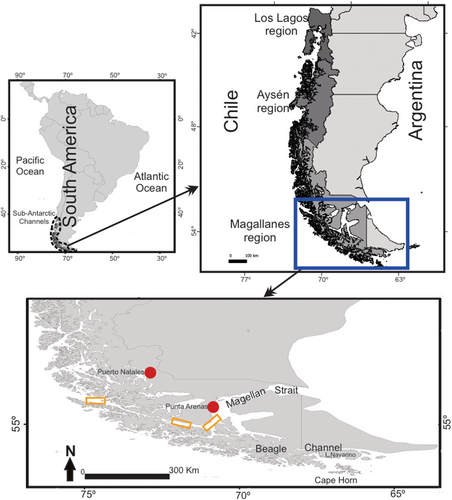 Figure 1 from the paper: Hake artisanal fishery occurs in the sub-Antarctic channels of Patagonia, Chile. This area comprises three political-administrative regions: Los Lagos, Aysén and Magallanes. The blue box shows the study area, the red circles display where the interviews were conducted, and the yellow rectangles show fishing grounds where we ran the sampling periods related to the offal consumption survey.
Figure 1 from the paper: Hake artisanal fishery occurs in the sub-Antarctic channels of Patagonia, Chile. This area comprises three political-administrative regions: Los Lagos, Aysén and Magallanes. The blue box shows the study area, the red circles display where the interviews were conducted, and the yellow rectangles show fishing grounds where we ran the sampling periods related to the offal consumption survey.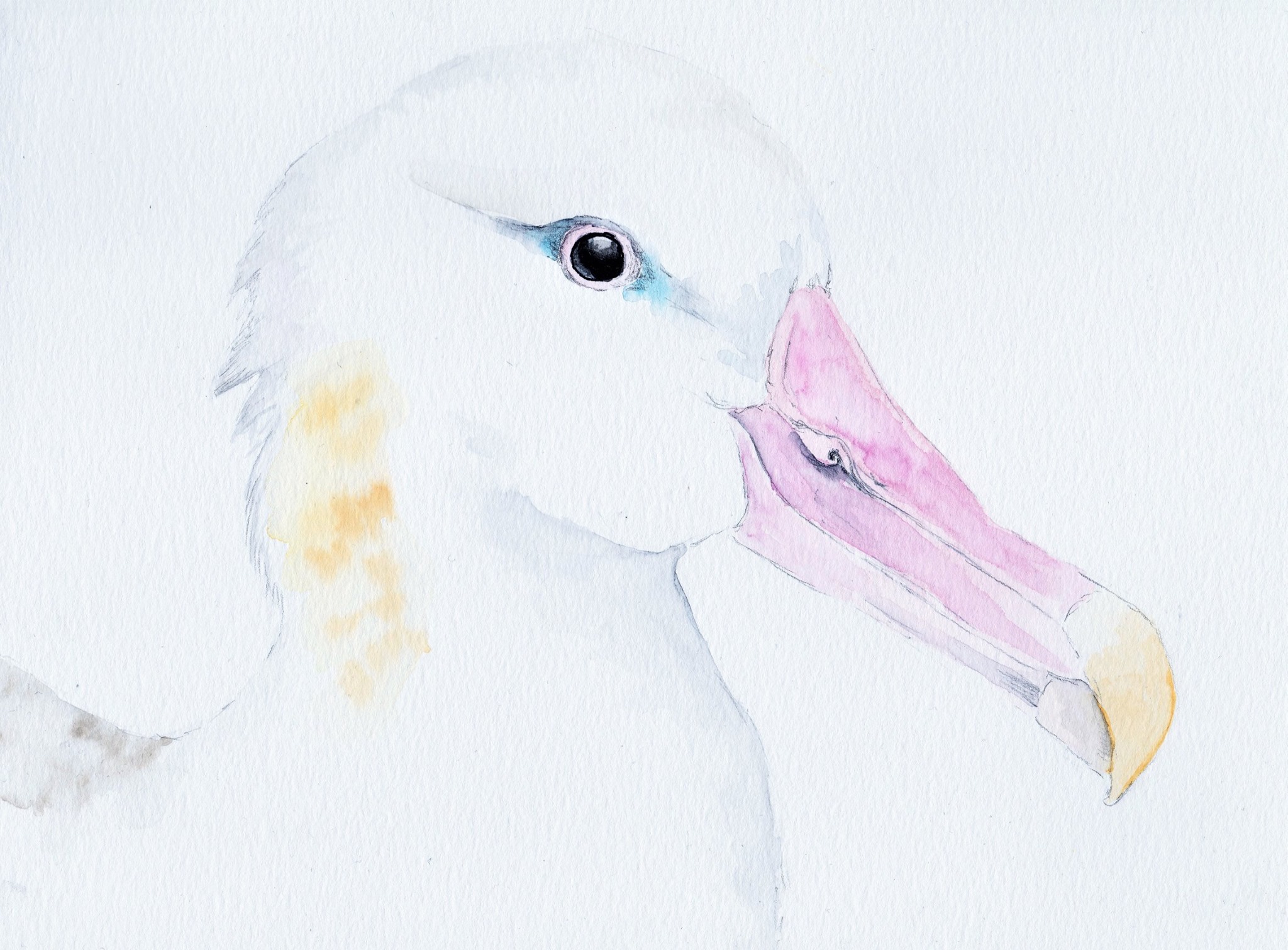 Antipodean Albatross by Lea Finke for World Albatross Day 2020, after a photograph by Kirk Zufelt
Antipodean Albatross by Lea Finke for World Albatross Day 2020, after a photograph by Kirk Zufelt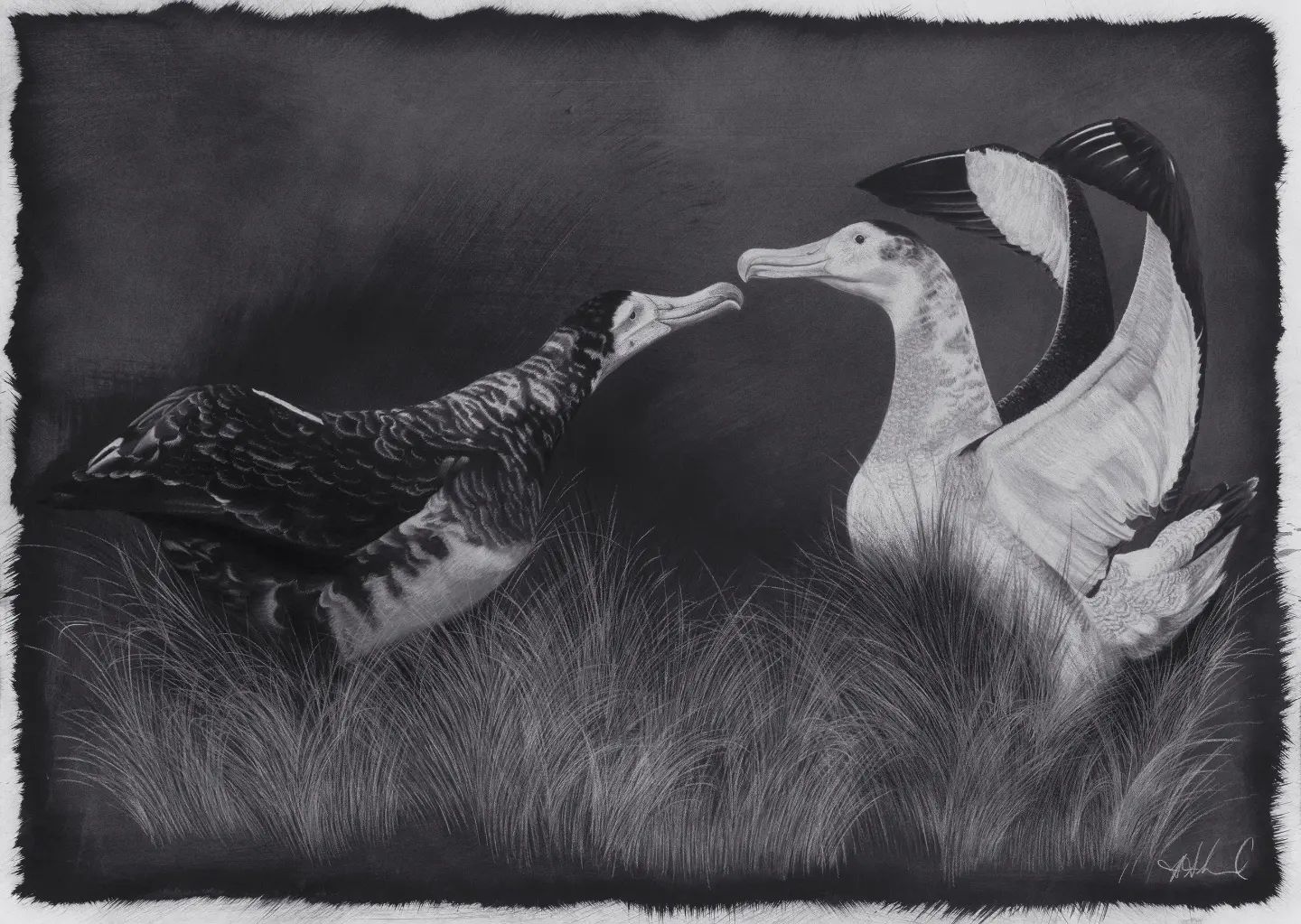
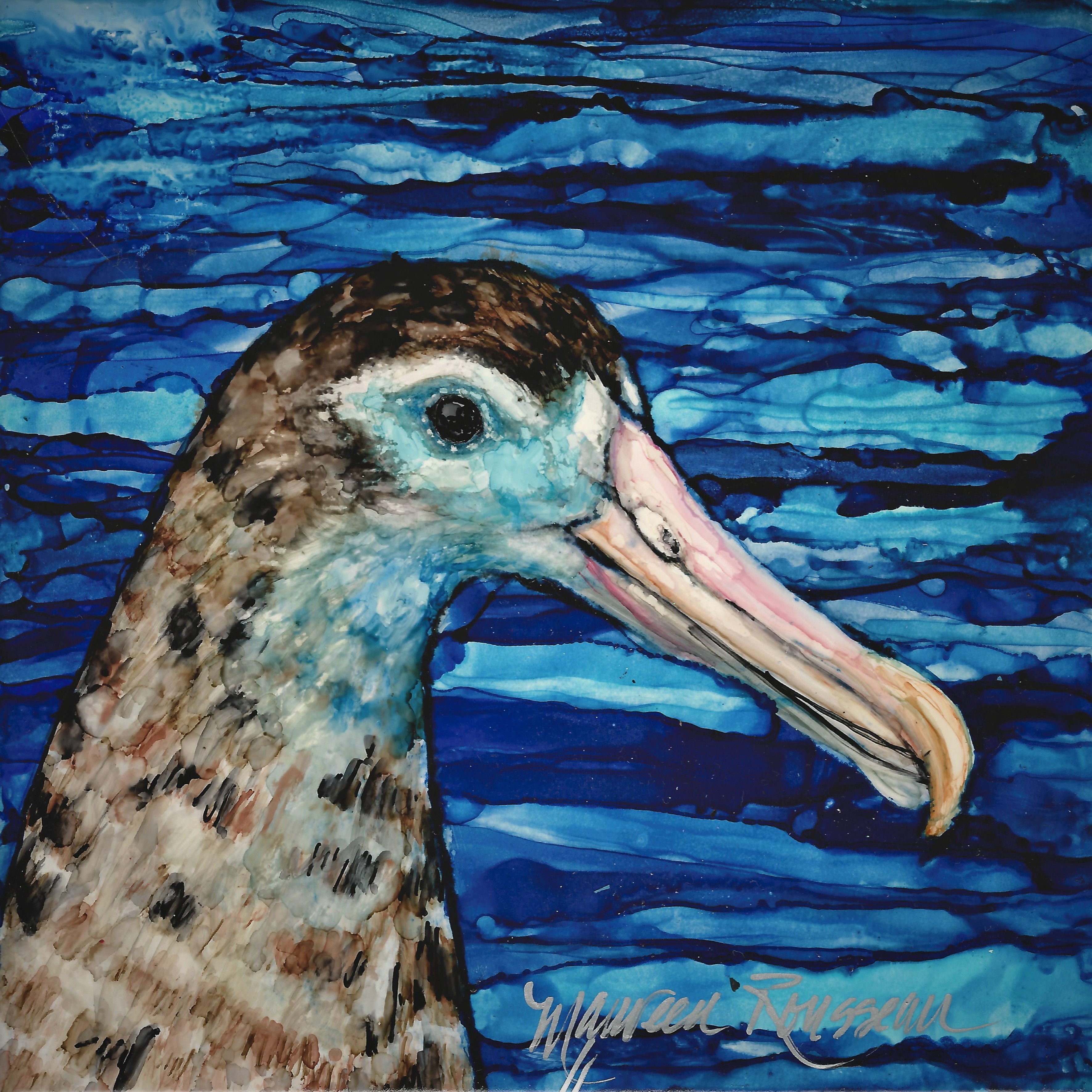
 Antipodean Albatrosses at sea, artwork by James Allan
Antipodean Albatrosses at sea, artwork by James Allan

 A Laysan Albatross chick gets close to fledging, photograph by Hob Osterlund
A Laysan Albatross chick gets close to fledging, photograph by Hob Osterlund
